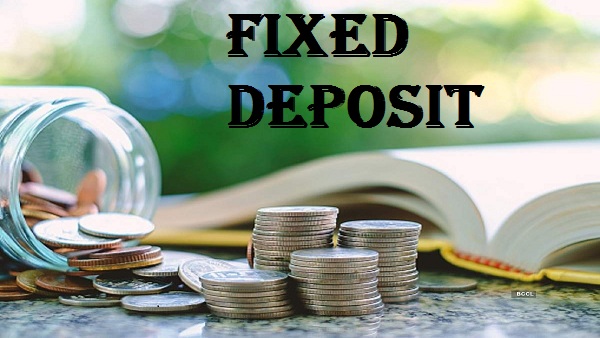Education is a priceless gift that opens doors to opportunities and empowers individuals to reach their full potential. However, the soaring costs of education can be a major hurdle for many families. According to a recent All India Survey on Higher Education study, the average annual cost of pursuing higher education in India has increased by 44% in the last decade. This alarming statistic highlights the growing financial burden that families face when it comes to funding education. Fear not, for there is a solution that combines financial stability with attractive returns: Fixed Deposits (FDs). In this article, we will guide you through utilising FDs to fulfil your educational dreams while capitalising on the benefits of FD Interest Rates.
Unveiling the Path to Affordable Education: Harnessing the Potential of FDs
-
Assessing Financial Goals
Before embarking on your Fixed Deposit journey, it is crucial to assess your financial goals. Begin by calculating the amount required to cover education expenses, including tuition fees, accommodation, study materials, and related costs. Take into account the duration of the course or program you or your loved one intends to pursue. A clear understanding of your financial requirements will help you formulate an effective FD investment strategy.
-
Choosing the Perfect FD Tenure
The tenure of your FD plays a vital role in determining the interest rates you will earn. It is essential to select a tenure that aligns with your education timeline. For short-term goals, such as funding a diploma course, opt for a shorter tenure. Conversely, for long-term goals like a university degree, consider a longer tenure to benefit from higher interest rates. Remember, time is a crucial factor in maximising your returns.
-
Comparing FD Interest Rates
Different banks and financial institutions offer varying interest rates. Conduct thorough market research to compare interest rates offered by various providers. Recent statistics indicate that average FD Interest Rates in India range from 4% to 6%. Though seemingly marginal, even a slight difference in interest rates can significantly impact your savings in the long run. Utilise online comparison tools and seek guidance from financial advisors to secure the best possible interest rates.
-
Employing the Laddering Strategy
To optimise your FD investments, consider employing the laddering strategy. Instead of depositing a lump sum into a single FD, divide your funds into multiple smaller deposits with varying tenures. This strategy enables you to benefit from fluctuating interest rates at different intervals. As each FD matures, you can reinvest the funds or allocate them towards immediate education expenses, providing flexibility and enhanced returns.
-
The Power of Reinvestment
One of the most significant advantages of FDs is the option to reinvest the interest earned. Rather than withdrawing the interest as regular income, reinvesting it back allows for compounding. Compounded interest can significantly amplify your savings over time. As a result, your initial investment grows, and you accumulate more funds to cover future education expenses.
-
Unlocking Liquidity
In times of immediate financial need, consider exploring the option of taking a loan against your FD. Banks and financial institutions often provide loans against FDs at lower interest rates compared to other borrowing options. This facility enables you to access liquidity for education-related emergencies without disrupting your FD investment.
-
Tax Implications & Benefits
When considering FDs for education funding, it is important to understand the tax implications and benefits associated with such investments. The interest earned on FDs is subject to taxation as per the prevailing income tax laws. However, certain tax-saving options and exemptions may be available, such as Section 80C of the Income Tax Act, which allows for deductions on the principal amount invested. Consult with a tax advisor to maximise the tax benefits while utilising FDs for education expenses.
-
Regular Monitoring and Adjustment
As with any investment, it is crucial to regularly monitor your FDs and reassess your financial goals. Keep an eye on the prevailing FD interest rates and evaluate if transferring funds to a different bank or financial institution would yield higher returns. Additionally, periodically review your education funding needs and make adjustments accordingly. By staying proactive, you can ensure that your FDs align with your evolving requirements.
-
Managing Education Expenses
While FDs are known for their stability and long-term nature, they also offer flexibility when managing education expenses. Some banks and financial institutions provide the option of premature withdrawal or partial withdrawal of funds. This feature can be advantageous if you need to access funds for immediate education-related needs. However, it’s important to note that premature withdrawals may come with certain penalties or reduced interest rates. Evaluate the terms and conditions of your Fixed Deposit carefully and weigh the pros and cons before opting for any withdrawals.
-
Diversification of Investments
While FDs provide a secure and reliable investment avenue, it’s essential to consider diversifying your investment portfolio. Investing solely in FDs may limit your potential for higher returns. Explore other investment options such as Mutual Funds (MFs), stocks, or real estate to diversify your portfolio and strike a balance between risk and returns. Diversification allows you to spread your investments across different asset classes, reducing the overall risk and potentially enhancing your long-term financial growth.
Wrapping Up
Investing in education is an investment in a brighter future. By leveraging the power of FDs, you can effectively address education expenses without compromising your financial stability. Religiously follow the tips mentioned above while practising careful planning, regular monitoring, and informed investment decision-making to transform FDs into valuable assets that propel your educational aspirations forward. So, seize the opportunity, unlock the potential of FDs, and pave the way to affordable education and limitless possibilities. Remember, with each deposit, you are not just securing financial stability but also investing in the growth and success of the next generation.

